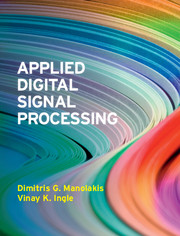Signal processing is a discipline concerned with the acquisition, representation, manipulation, and transformation of signals required in a wide range of practical applications. In this chapter, we introduce the concepts of signals, systems, and signal processing. We first discuss different classes of signals, based on their mathematical and physical representations. Then, we focus on continuous-time and discrete-time signals and the systems required for their processing: continuous-time systems, discrete-time systems, and interface systems between these classes of signal. We continue with a discussion of analog signal processing, digital signal processing, and a brief outline of the book.
Study objectives
After studying this chapter you should be able to:
Understand the concept of signal and explain the differences between continuous-time, discrete-time, and digital signals.
Explain how the physical representation of signals influences their mathematical representation and vice versa.
Explain the concepts of continuous-time and discrete-time systems and justify the need for interface systems between the analog and digital worlds.
Recognize the differences between analog and digital signal processing and explain the key advantages of digital over analog processing.
Signals
For our purposes a signal is defined as any physical quantity that varies as a function of time, space, or any other variable or variables. Signals convey information in their patterns of variation. The manipulation of this information involves the acquisition, storage, transmission, and transformation of signals.
There are many signals that could be used as examples in this section. However, we shall restrict our attention to a few signals that can be used to illustrate several important concepts and they will be useful in later chapters.
